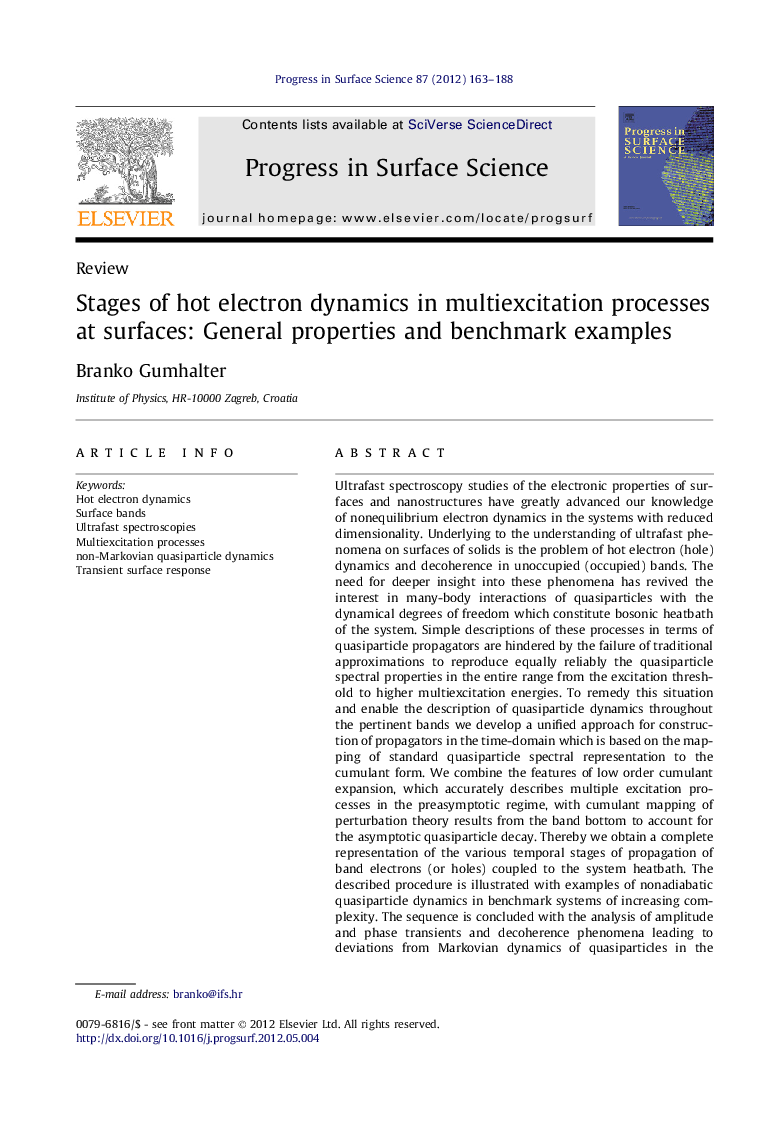| Article ID | Journal | Published Year | Pages | File Type |
|---|---|---|---|---|
| 5419963 | Progress in Surface Science | 2012 | 26 Pages |
Abstract
Ultrafast spectroscopy studies of the electronic properties of surfaces and nanostructures have greatly advanced our knowledge of nonequilibrium electron dynamics in the systems with reduced dimensionality. Underlying to the understanding of ultrafast phenomena on surfaces of solids is the problem of hot electron (hole) dynamics and decoherence in unoccupied (occupied) bands. The need for deeper insight into these phenomena has revived the interest in many-body interactions of quasiparticles with the dynamical degrees of freedom which constitute bosonic heatbath of the system. Simple descriptions of these processes in terms of quasiparticle propagators are hindered by the failure of traditional approximations to reproduce equally reliably the quasiparticle spectral properties in the entire range from the excitation threshold to higher multiexcitation energies. To remedy this situation and enable the description of quasiparticle dynamics throughout the pertinent bands we develop a unified approach for construction of propagators in the time-domain which is based on the mapping of standard quasiparticle spectral representation to the cumulant form. We combine the features of low order cumulant expansion, which accurately describes multiple excitation processes in the preasymptotic regime, with cumulant mapping of perturbation theory results from the band bottom to account for the asymptotic quasiparticle decay. Thereby we obtain a complete representation of the various temporal stages of propagation of band electrons (or holes) coupled to the system heatbath. The described procedure is illustrated with examples of nonadiabatic quasiparticle dynamics in benchmark systems of increasing complexity. The sequence is concluded with the analysis of amplitude and phase transients and decoherence phenomena leading to deviations from Markovian dynamics of quasiparticles in the paradigmatic quasi-two dimensional image potential bands on Cu (1Â 1Â 1) surface. Lastly, we outline the spectroscopic investigations of surfaces in which manifestations of these effects should be recognized in the interpretations of measurements.
Related Topics
Physical Sciences and Engineering
Chemistry
Physical and Theoretical Chemistry
Authors
Branko Gumhalter,
